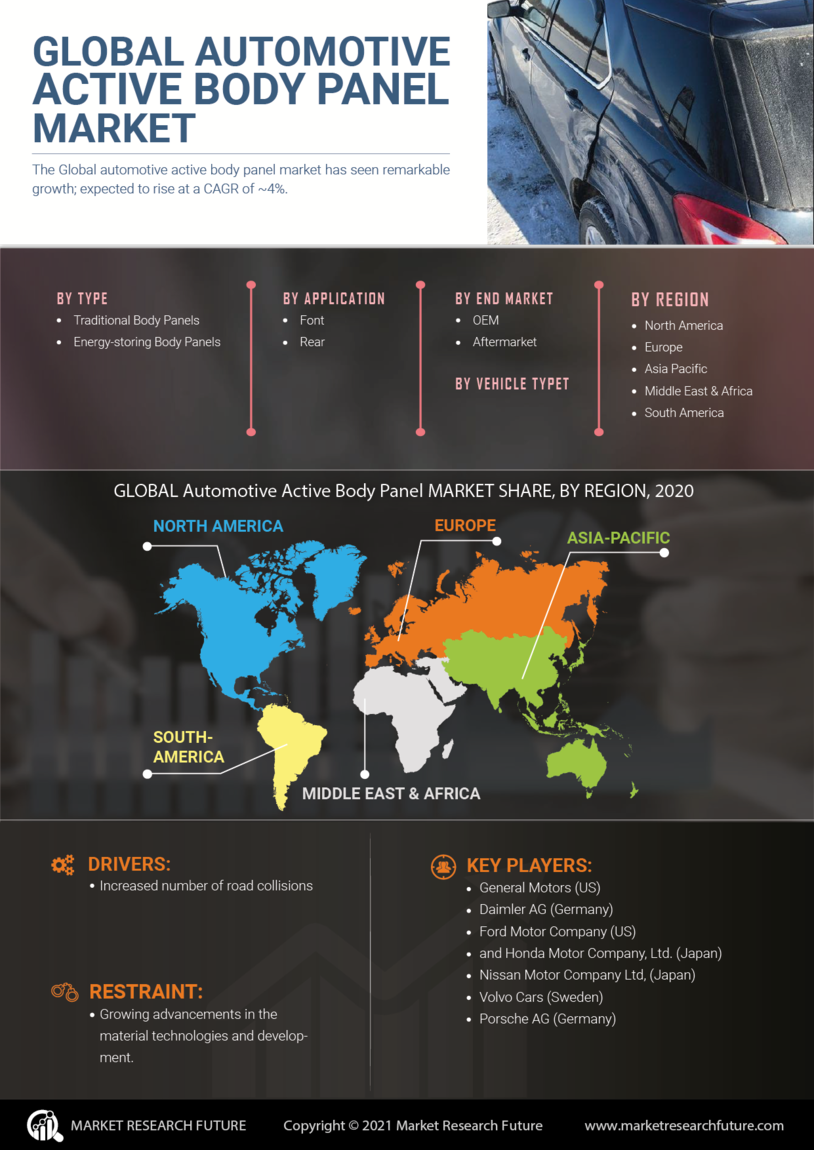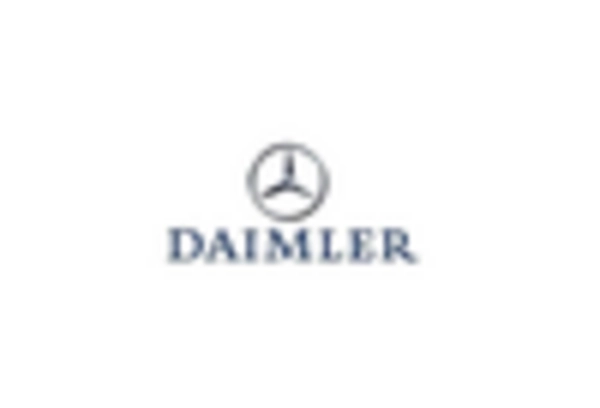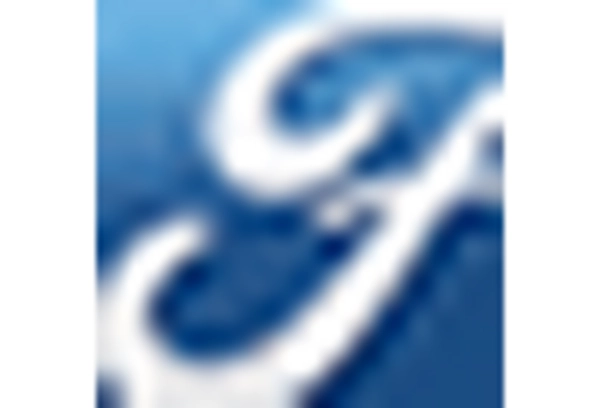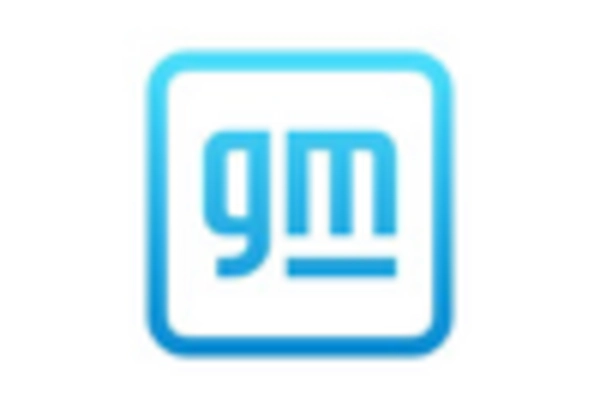Regulatory Compliance
Regulatory compliance is a critical factor influencing the Automotive Active Body Panel Market. Governments worldwide are implementing stringent regulations aimed at improving vehicle safety and reducing emissions. These regulations compel manufacturers to invest in advanced materials and technologies that meet compliance standards. For example, the introduction of new safety standards has led to the development of active body panels that can absorb impact more effectively. This compliance-driven innovation is expected to propel market growth, with estimates suggesting that the sector could see a 10% increase in market size as manufacturers adapt to these evolving regulations.
Sustainability Initiatives
The Automotive Active Body Panel Market is increasingly influenced by sustainability initiatives. Manufacturers are under pressure to reduce their carbon footprint and enhance the recyclability of materials used in vehicle production. This shift towards eco-friendly practices is driving innovation in active body panels, which can be designed to be lighter and more efficient. For instance, the use of advanced composites and lightweight metals not only improves fuel efficiency but also aligns with consumer preferences for environmentally responsible products. As a result, the market is projected to grow at a compound annual growth rate of approximately 8% over the next five years, reflecting the rising demand for sustainable automotive solutions.
Technological Advancements
Technological advancements play a pivotal role in shaping the Automotive Active Body Panel Market. The integration of smart technologies, such as sensors and actuators, allows for dynamic adjustments to body panels, enhancing vehicle aerodynamics and performance. These innovations are not merely enhancements; they represent a fundamental shift in how vehicles interact with their environments. The market is witnessing a surge in the adoption of these technologies, with estimates suggesting that the segment could account for over 30% of the total market share by 2026. This trend indicates a growing consumer expectation for vehicles that offer both functionality and cutting-edge technology.
Economic Growth and Urbanization
Economic growth and urbanization are driving forces behind the Automotive Active Body Panel Market. As economies expand, disposable incomes rise, leading to increased vehicle ownership and demand for advanced automotive features. Urbanization further compounds this trend, as city dwellers seek vehicles that offer enhanced functionality and efficiency. The market is likely to benefit from these demographic shifts, with projections indicating a potential increase in demand for active body panels by 20% in urban areas over the next decade. This growth reflects a broader trend towards smarter, more adaptable vehicles that meet the needs of modern consumers.
Consumer Demand for Customization
Consumer demand for customization is a significant driver in the Automotive Active Body Panel Market. As consumers increasingly seek personalized vehicles, manufacturers are responding by offering customizable body panels that cater to individual preferences. This trend is particularly evident in the luxury and performance vehicle segments, where bespoke options are becoming standard. The market for customized automotive solutions is expected to expand, with projections indicating a potential increase in revenue by 15% annually. This shift not only enhances customer satisfaction but also encourages manufacturers to innovate continuously, ensuring that they remain competitive in a rapidly evolving market.


















Leave a Comment